End-of-November Farm Update
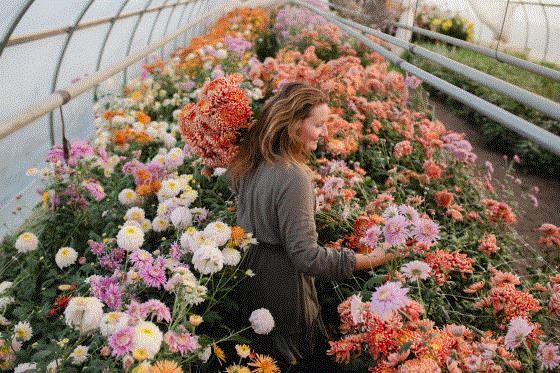
I am officially a chrysanthemum fanatic. Our first crop of heirloom mums was a tremendous success!
Hello friends, and welcome to the end of November! Tater and I are wrapping up fresh flower season. We’re sending out the last of the chrysanthemums along with a handful of other surprises for Thanksgiving orders this week. I imagine many of you are in the same boat, or you are gearing up for the Christmas season. I congratulate you on finishing (or almost finishing) your 2023 season.
Now is the time to start planning your 2024 lineup. In this edition of Bloom Beat, the photos we share will hopefully inspire your to try chrysanthemums on your farm this coming year. But if nothing else, you can use this newsletter for productive phone scrolling during Thanksgiving dinner. What better way to avoid having to share awkward generic platitudes with your least favorite (insert relative here) by marveling over drool-worthy chrysanthemum photos? Tater and I have got you covered!
In this edition of Bloom Beat, Tater is going to share her top heirloom chrysanthemum picks and some lessons we learned. I hope this newsletter will be a starting point for you to plan your own fall mum crop. Buckle up, friends! We got a lot of ground to cover and a ton of breathtaking chrysanthemums to look at.
With all that said, let’s talk shop!

Lessons from Our First Chrysanthemum Season
I mentioned before how this is our first season growing heirloom chrysanthemums. Overall, it was a tremendous success—but there was a learning curve. Here are some of my takeaways and general tips for chrysanthemum production:
As many of you know, our farm is in Michigan, where the first-frost date can be a moving target. We planted our mums in a greenhouse, since we weren’t sure whether or not they would finish before a frost. Chrysanthemums are similar to peonies in that there are early, mid and late varieties. Our earliest flowering chrysanthemums flowered the second week of October, and most of our crop flowered the second week of November. I am glad we gave them indoor production space to ensure they would finish before frost.
Be sure to take careful notes on when each variety flowers. All of our white chrysanthemums flowered in early November, and I would love to have some for Christmas sales in the future. If any of you know of a late-flowering white heirloom chrysanthemum shoot me an email to ldaschner@ballpublishing.com. We would love to hear from you!
Another benefit of indoor chrysanthemums is that they produce taller stems. Or a little too tall, in my case. Our plants were well over 4 ft. tall, which is more stem length than we need. We did use two layers of support netting, but it barely held them up, because chrysanthemum foliage and flowers are quite heavy.
This season, we cut back our chrysanthemums foliage for the last time the week of July 4. The landscaper in me felt that was a good guess based on how you treat hardy chrysanthemums in the landscape. But the chrysanthemums were still a touch taller than needed, so next season we will cut back the plants in late July in hopes that the plants will be more manageable. This may or may not work for you, depending on where you are farming; just bear in mind that you may need to experiment for a season to determine your sweet spot.
'Judith Baker' and 'Fleur De Lis' mums have novel shapes. The epitome of sea creature vibes.
Taking cuttings is the most efficient way to multiply your chrysanthemum inventory. If you are growing patented varieties, you need to pay a royalty to the breeder, or propagation may be prohibited entirely. Be sure to do your due diligence ahead of time. But in the case of true heirloom mums, the sky's the limit, since they are not patented. All the varieties below are heirloom so you can propagate these beauties to your heart’s content.
Chrysanthemums are easy to propagate: a little mist, bottom heat and Hormodin go a long way. Or you can crush willow stems if you are looking for a more natural source of auxin for rooting (shout out to Dr. Brad Rowe for that pro tip). If you are thinking about buying heirloom chrysanthemum plugs that have a hefty price tag, you can stretch your dollar by taking more cuttings. Check out this VIDEO from Bare Mountain Flower Farm for some guidance.
Another key lesson this season is to watch out for aphids. It’s easy to put your mums on the back burner while all your outdoor fields are in roaring bloom. But it’s important to keep your eye on them, especially since aphids can get out of hand very quickly. It gets even more challenging if the aphids are in the blooms after they open. It’s almost impossible to remove all the aphid carcasses in open blooms if you spray too late. Be sure your integrated pest management plan is on point—your chrysanthemums will repay you for diligence later!
Last but not least, you need to make sure your customer base will love the chrysanthemums you grow as much as you do. Know your customers and what they want. Be sure to market the benefits of local mums, no matter what kind you grow. Tater and I sell to florists, so our mums need to be different than the mums at the wholesaler. Shape, color and bloom size were all key considerations for our variety selection.
We also asked our customers for ideas and recommendations. In the words of one of our customers, “As long as they look like a sea creature or something that would bite you, we want it!” In other words, they want bodacious blooms with unique shapes and novel presentations! That gave me a clear visual and understanding before taking on a new crop. If you sell retail or at a farmer’s market, your customers may have different needs. The only way to know is to ask.

Disbudding 101
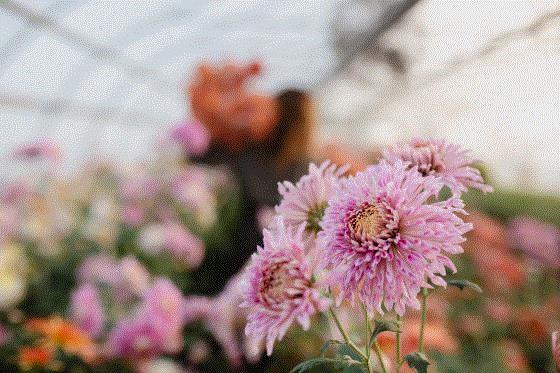
A spray stem of 'Shelbers' that we missed when disbudding. It still makes an impressive stem.
To disbud or not to disbud, that is the question!
Disbudding is the removal of lateral flower buds, leaving only a single terminal bud. By disbudding, the terminal flower grows larger and showier. Here is a VIDEO of a dahlia being disbudded. Chrysanthemums are similar, except they can have additional flower buds in the leaf axils further down the stem that should be removed if you are growing a disbud.
The other option is to leave the buds alone, which produces spray chrysanthemums. Both growing practices have pros and cons. Spray mums are less labor intensive and produce more blooms, but the blooms are smaller. Disbuds take lots of hand labor, and if you break the only remaning bud, you've ruined the stem. But the massive, showy flower that results can be well worth the trouble.
Some varieties should be grown only as a spray, and vice versa. Be sure to check with your favorite supplier to determine if there are nuances with the varieties you are growing. All of Tater’s picks below can be grown either way.
We decided to disbud our mum crop, since our customers are florists. As mentioned, disbuds are a lot more labor intensive, but we trained a specific person to handle this task. That way, the process became more efficient as the person got faster at it. I think it's important to determine if your customer base will pay more for a bigger flower. If your customers love sprays, that saves you some work. Once again, a little input from your customers goes a long way.
Be sure to check out the photos below, because disbud chrysanthemums are incredible! And check out this VIDEO to see some next-level chrysanthemum disbuds. These beauties are for a chrysanthemum show, but you’ll see the difference between disbuds and sprays.

Tater's Chrysanthemum Picks
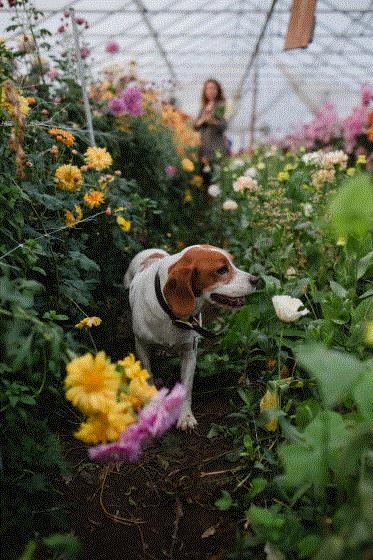
Sneak peek of Tater on her daily chrysanthemum patrol.
Alright team, the moment you have all been waiting for: Tater’s 2023 chrysanthemum picks!
They aren’t listed in any order, because she loves them all equally and spent a ton of time keeping them free from mice. Her daily chrysanthemum patrol paid off, and she knows them all personally.
Out of the 34 varieties we grew this season, these are the best. Bear in mind, these are all heirlooms. For our florists, we needed chrysanthemums that are incredibly unique. There are potted chrysanthemums, such as those from Syngenta, that you can treat as a cut flower and that are desirable. Ball also has a line of mums that you can grow as cuts. Once again, know your customer!
Without further ado, these are Tater's favorites:
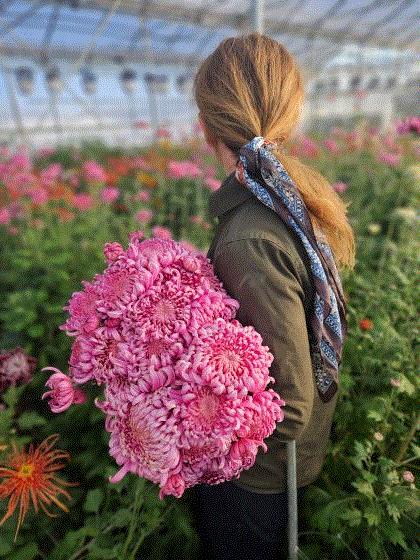
'Quan Yon Hung' chrysanthemum.
'Quan Yon Hung' was our favorite lavender chrysanthemum this season. Incredible as a disbud, as you can see from the photo the blooms are huge! Our designers loved the color and presentation of this one. I look forward to harvesting more of her next season when stock is plentiful.
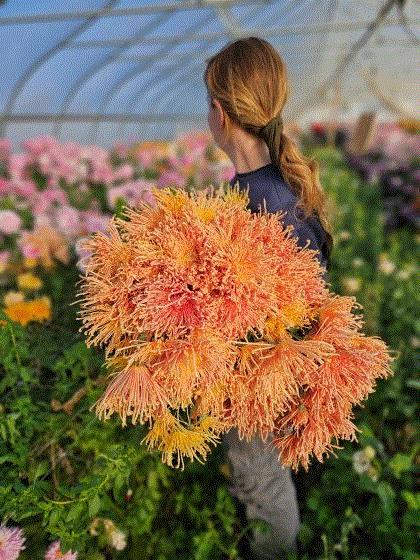
'Senkyo Kenshin', possibly one of the most beautiful blooms I have ever cut.
This variety stops me in my tracks every time I see it. The blooms are huge when disbudded and the petals are a perfect orange hue for fall. There is so much to love and appreciate about this one. It is similar to 'Golden Rain' in shape. 'Senkyo Kenshin' will always have a spot in our chrysanthemum program.
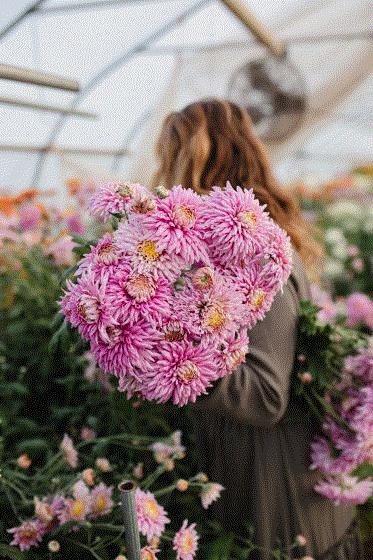
'Shelbers' chrysanthemum.
Everyone, meet 'Shelbers'. Her bubblegum-pink blooms fade to a soft lavender as the petals unfurl. I was quite surprised how much our florists loved working with pink for fall arrangements. We grew 'Shelbers' as a disbud and she did not disappoint. Huge blooms in conjunction with a high petal fill makes her a winner. She also taught me not to discount pink for fall.

'Prom King' chrysanthemum.
'Prom King' was the most traditional-looking mum we had on the farm. As far as presentation, she's not much to write home (or an e-newsletter) about. But she makes the list because she was the earliest-flowering variety we had this season. 'Prom King' flowered three weeks before all the others and was perfect for introducing our florists to heirloom chrysanthemums. When grown as a disbud the blooms were bigger than the palm of my hand, and the iridescent gold petals were appreciated by many customers. There is a value to early blooming varieties to get your customers engaged in a new crop before having large quantities. For that reason, we will grow 'Prom King' again next year.
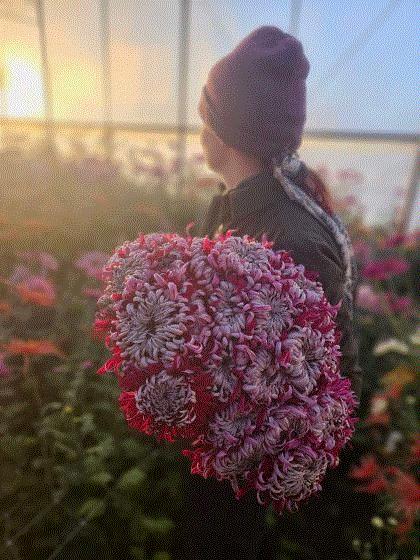
'Lilli Gallon' chrysanthemum.
'Lilli Gallon' wins the award for most unique color combination on our farm this season, and that puts her in the top three chrysanthemums for me. The petals are burgundy with silver gray undersides. Very striking, and progressive designers clamored for this one since we only had a handful of plants. Next season 'Lilli Gallon' will be plentiful on our farm ... I might even be able to snag a few stems for myself!
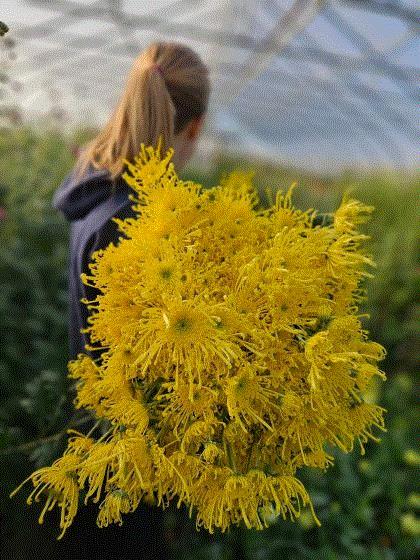
'Golden Rain' chrysanthemum.
I have a major confession: yellow is not a favorite color. There, I said it. But 'Golden Rain' almost changed my mind. Just like the name implies, delicate golden petals unfurl in a cascade and the curls at the end of the petals look like raindrops. Varieties like 'Golden Rain' are challenging to ship, since they are incredibly intricate, which makes them even more unique for our farm. 'Golden Rain' is an earlier variety, which helps us stagger the mum selling season.
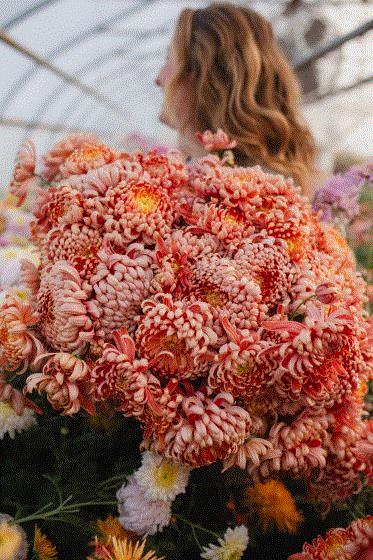
'River City' chrysanthemum. One of the MVPs of the season.
'River City' is in my top five this season. Our florists loved the shape of the irregular incurve flowers, and the rusty copper hues of this variety is over the top. The intense copper fade to a light bronze as the bloom opens. It bridges color palettes well. Everyone loves 'River City'.
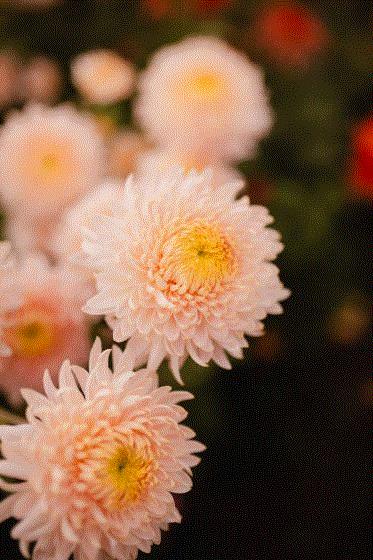
'Seaton's Je Dore' chrysanthemum.
'Seaton's Je Dore' is a favorite for event planners and wedding florists. Her soft blush- to baby pink-hued petals coalesce any color palette, making her a must-grow variety for event work. Our customers call her the dahlia 'Cafe Au Lait' equivalent in chrysanthemums—10 out of 10!
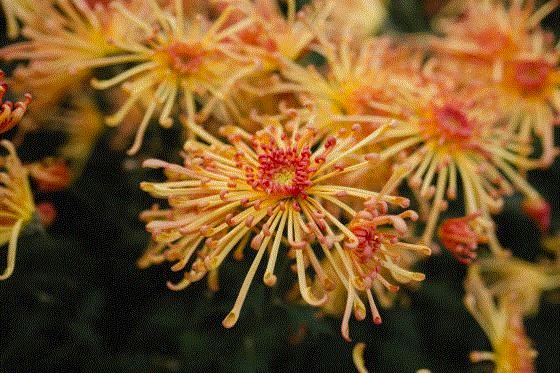 'Lava' chrysanthemum.
'Lava' chrysanthemum.
This variety is fun—the epitome of a sea urchin-looking flower. 'Lava' is similar to 'Golden Rain' in its presentation and petal shape. Tater enjoyed the contrast between the gold-based petals and the highlights of coral in the very center. Too cool not to try your hand at!


Happy Growing!
Lindsay Daschner (and Tater)
Editor-at-Large—Bloom Beat
Owner—Forget-Me-Not Farms
This email was received by 6,259 of your fellow fresh-cut flower growers!
If you're interested in advertising in Bloom Beat, contact Kim Brown and she will hook you up!